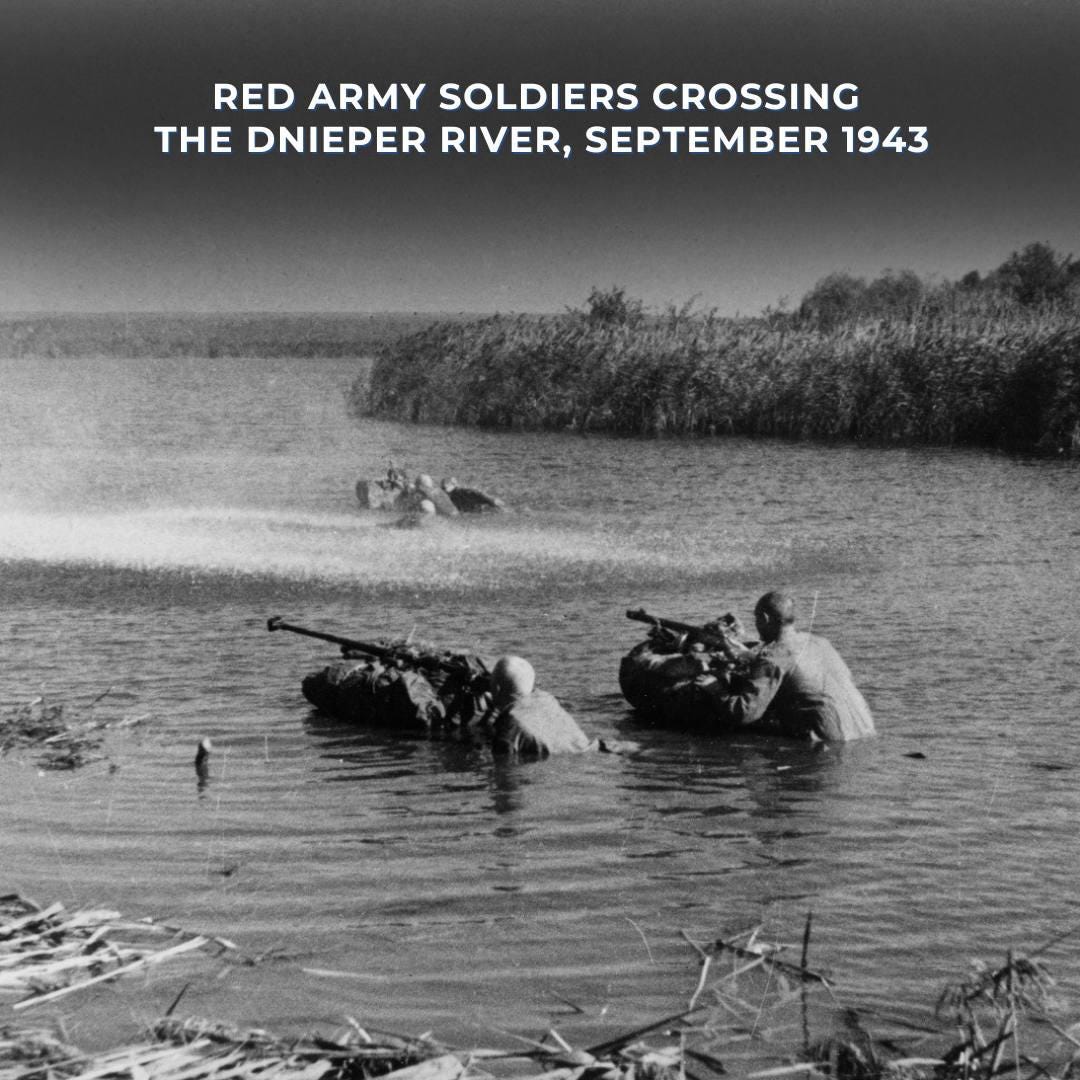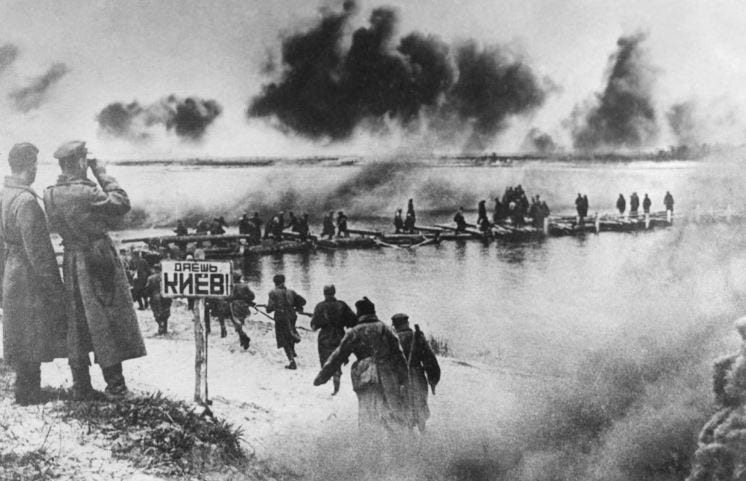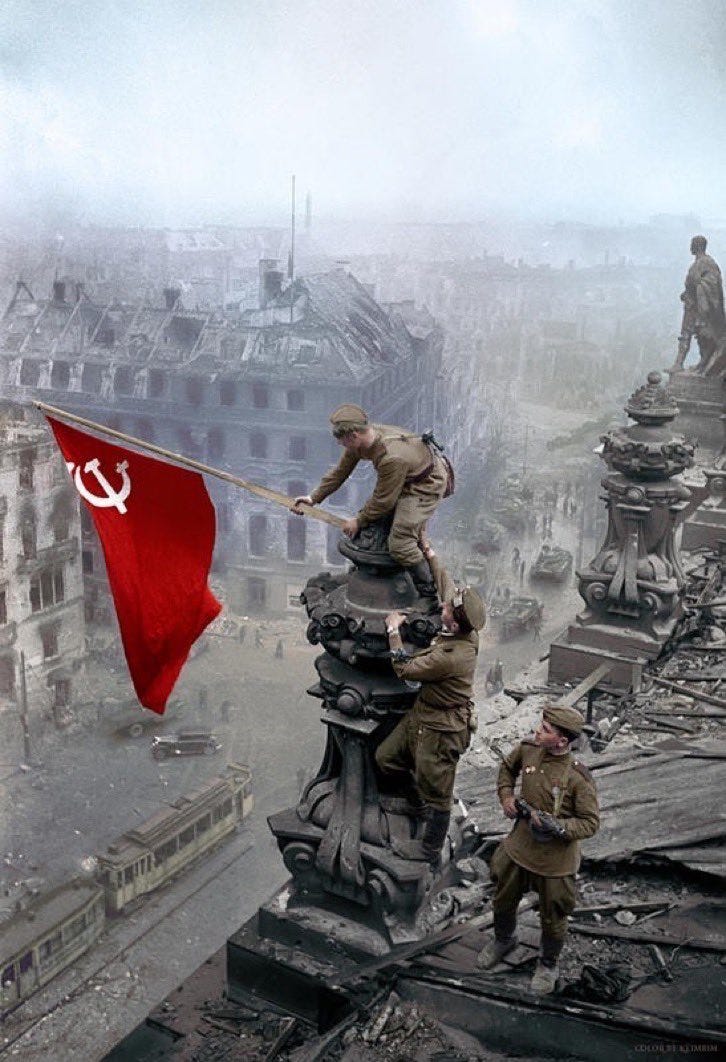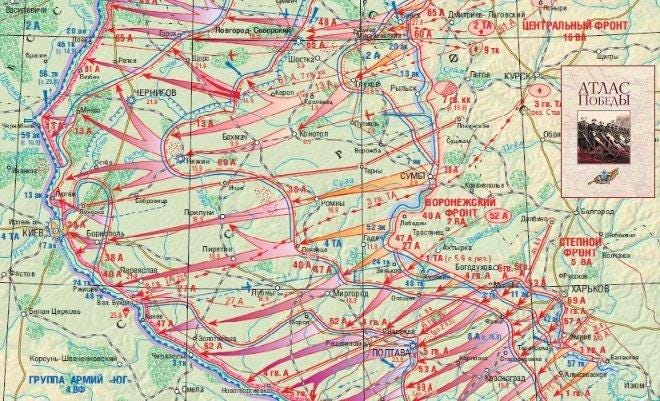What's next for Donbas?
On August 26, 1943, the Battle of the Dnieper began — one of the largest and most important battles of World War II between the Red Army and Nazi invaders, with approximately, to various estimates, 4 million people engaged on both sides
The Russians won then.
They are winning now.
The Russian Summer Offensive in the Donbas, as elsewhere in other occupied regions, has been very successful.
But this is a different kind of war.
Success on the ground is accompanied by gradual destruction of the Kiev Regime’s supportive military infrastructure such as the .precision strike by Iskander-Ms on the HIMARS repair and command base in Trostyanets destroying not only Western multiple launch rocket systems but the headquarters of the 80th Airborne Assault Brigade of the Armed Forces of Ukraine
Why doesn’t Kiev just give up?
Because Zelensky is not the one running things:
Neo-Nazi militant Sternenko (former leader of the Odessa branch of the Right Sector terrorist organization) gives Zelensky a warning via The Times that if he 'surrenders the Donbass,' he won’t live to see another day
“If ["President"] Zelensky were to give any unconquered land away, he would be a corpse — politically, and then for real,” Sternenko said. “It would be a bomb under our sovereignty. People would never accept it.”
In his interview with The Times, Sternenko calls for preparing for an 'eternal struggle' with Russia, as 'compromise is impossible.’
Certainly NATO, the CIA and MI6 are aware of this – that Zelensky is powerless and that there can be no compromises or peace deals – in fact, “deals” of any kind as long as the Nazis remain in power. Ukraine is to Europe, as Israel is to the ME.
It is notable that the Wall Street Journal recently reported, and it was confirmed elsewhere, that the US is sending its longest range missiles so far, - subsonic ERAM missiles, arriving within six weeks. Although designed to evade Russian defenses, it is unlikely they can since the Russians are well aware of the countermeasures built-in and have work arounds.
Although these missiles cannot be launched without approval from the US Department of Defense, they are indication that the US continues to supply Ukraine, albeit through its European vassals. Transport aircraft have been arriving regularly in Poland and Romania carrying weapons and there are over 120 civilian cargo ships docked in Odessa, many them filled with critical supplies.
So the war will continue, at its current pace, which allows Russia to continue progress societally and industrially while BRICS takes over the global economy.
Russia therefore has no intention of repeating the Soviet strategy in Ukraine against the Germans at the end of WWII.
WWII? The SMO?
Let’s look at geography and terrain and the challenge it posed in WWII and still poses today.
Lviv is approximately 950 km (590 miles) west of the Dnieper River.
The Battle of the Dnieper during World War II involved establishing bridgeheads on the west bank, which was held by German forces.
Advantages and disadvantages of terrain
1. High, steep bluffs:
The west bank is significantly higher than the east bank. It has steep, cliffs and bluffs hat rise 80 to 300 feet (25 to 90 meters) --a massive natural defensive barrier,
2. Ravines and Gullies:
Numerous deep ravines, gullies, and small valleys provide cover and helped Soviet troops trying to scale the bluffs. But they were also natural defensive points for the Germans and made the movement of vehicles and heavy artillery extremely difficult for the Soviets.
3. Wooded Areas:
The west bank has forests and dense bush which also offer cover but limit lines of sight.
4. Villages and Urban Areas:
The high ground of the west bank is dotted with villages, towns, and cities, turned into fortified strongholds by the defending German forces in WWII and leading to bloody battles just as the urban agglomerations of Russian Ukraine became a kind of “Maginot Grid”. You can expect similar fortifications this time round
5. The River:
The wide Dnieper itself was a major barrier.
Despite all these things, the successful Soviet offensive across the Dnieper and capture of the west bank was costly and difficult -- but successful.
The Soviet advance was then directed to the Polish border, and Germany.
Today, the Russians face the same challenges of terrain as the Soviets did – but they have significant advantages that the Soviets lacked. The main one being that the Soviet were fighting a conventional, all-out war whose final goal was the conquest of Germany and the liberation of all of Eastern Europe.
The Russia’s goals in the SMO have always been limited – first the restoration of human rights in Russian Ukraine – initially through some form of federalism; then when that failed after Minsk 1 and 2 and Istanbul in 2022, the full liberation of Russian Ukraine who became parts of the Russian Federation.
As long as the Nazis remain in power in Kiev or even Lviv, supported by the West, this strategy is the only viable one, which can guarantee peace.
But how can the Russians and Putin succeed?
How Were the Soviets Able to Succeed?
Meticulous planning —but also and overwhelming force, requiring immense human sacrifice.
The Soviets enjoyed an enormous advantage in manpower and equipment after the Battle of Kursk.
By the time of the Dnieper offensive (August-December 1943), the Red Army could commit over 2.5 million soldiers, over 50,000 guns, 2,400 tanks, and 2,500 aircraft to the front.
It was big, this battle.
Both sides suffered suffered enormous losses.
The RF
A different kind of war…..
The RF also plans meticulously and has an advantage in manpower,
Russia has an army of over 1.5 million and in Ukraine an estimated 650,000, with perhaps 200, 000 combat troops not including the forces of the four oblasts.
Its weaponry is very different from WWII – with the emphasis on drones, missiles, helicopters, glide bombs. It makes use of sophisticated combined arms operations, smaller battle groups, and mobility. Its troops are highly trained and motivated.
As I have said, it is not aiming a conquering all of Eastern Europe, and it is not fighting forces as well-equipped and commanded as Hitler’s armies.
This is in no way “total war” of the kind that WWII was.
After the Battle of Kursk, the Germans had a lot of tanks and aircraft and artillery, of course. Their forces on the ground were still well-commanded and professional despite losses.
But the Ukrainians today have almost nothing left. And their forces on the ground are depleted, poorly trained and motivated. with the exception of a few Nazi units that cannot be everywhere at the same time.
2. WWII Multiple Simultaneous Assaults:
The Soviets, facing still very capable German forces, after the Battle of Kursk, established over 20 bridgeheads from north of Kiev all the way south to Zaporizhzhia, as you can see from the map, which stretched the German defenders (Heeresgruppe Süd) to their breaking point, making it impossible for them to concentrate their forces to eliminate any one bridgehead.
The Soviets did not attempt to minimize casualties as the Russians today are doing– they were in a hurry to get to Berlin before the Allies. The SMO is not a war as the Great Patriotic War was. Putin has good reason to make it a crime to call it one.
The Russians are taking their time since:
it is clear they are going to win no matter what
a slow war minimizes casualties for their side
a slow war minimizes civilian casualties in the Ukrainian region as a whole
a slow war allows attrition of Nazi nationalists while generating resistance to the Banderites among the Ukrainian people themselve.
The war stimulates societal and industrial development in Russia while degrading the West.
3. Soviet Deception and Maskirovka:
Both the Soviets and Russians make good use of maskirovka!
At Bukrin Bend south of Kiev, the Soviets convinced the Germans the main thrust would come from that large, bridgehead – while at the same time, moving the 3rd Guards Tank Army north to attack from the smaller, Lyutezh bridgehead,. They achieved complete surprise leading to the liberation of Kiev.
The Russians did something like this when they managed to put Kiev under siege with a relatively small force at the beginning of the war in 2022.
Despite what the MSM says the intent was never to take Kiev. The Russian force was too small and Kiev way too large! But the Russians tied up UAF forces in the North, allowing them to prosecute the war successfully in the South.Ukrainian propaganda called it “the Battle for Kyiv”. It was hardly that.
Western military planners lack subtlety, if not imagination.
If you have read my other articles, you know that maneuvering for leverage is basic to all the oriental martial arts. (Seiryoku Zenyo" : maximum efficiency, minimum effort),
Later, the Russians maneuvered, withdrawing from some areas such as Kharkov and Kherson to build up forces elsewhere and attrit the Ukrainians.
Recent statistics prove this point– 1.72 million Ukrainians KIA and more than that number “irrecoverably” injured, leave the Ukrainians with limited resources. By contrast Russian losses have been minimal, something over 200,000, with casualty rates declining.
4. Courage and Sacrifice:
Soviet soldiers crossed the wide river on anything that could float—fishing boats, makeshift rafts, barrels, and planks—under heavy artillery and machine-gun fire. Those who made it across clung to the bluffs resisting furious German counterattacks, buying time to get tanks and heavy guns across on pontoon bridges.
The Soviets were motivated – and innovative.
The Russians today are, too. But they are not fighting for territory nor to drive straight to the Polish border and beyond but to kill the other side’s soldiers or capture them.
The Soviets’ goal was ambitious aimed at Berlin.
Russia really needs only Kiev.
5. Irregulars
Soviet partisans operated behind German lines disrupting supply lines, attacking reinforcements moving to the front, and providing crucial intelligence on German troop movements and fortifications.
“Soviet partisans” = Ukrainian partisans of whom there were many. The Galicians /Ruthenians – the Banderites-- were another matter.
Today, the role played by partisans is filled by drones, special forces, and others. There are “partisans” but mostly in Southern Ukraine in places like Odessa.
6. German Overextension and Strategic Error:
The German high command, including Hitler, was slow to authorize a retreat to the "Panther-Wotan" line, on the Dnieper.
This delay meant the retreating German forces arrived at the river exhausted and disorganized, They didn't have enough time to properly fortify the "East Wall" defensive line, which in fact was not a finished fortification.
This is the same mistake that Zelensky has made, focusing on the East bank of the Dniepr and fortifications there, without enough troops or materiel to really fight and wasting lives trying to attack Russia proper. He is losing 3000 to 7000 soldiers a week.
No German Nazi commander has made as many strategic mistakes as Zelensky—other than Hitler, of course.
Now without enough manpower, the Ukrainians must move troops around frantically from one battle site to another which makes a mess of command structure, leading to further problems. Recently the Azovs were tasked with taking a small town which the Russians quickly vacated—but the Azovs are likely to be surrounded.
At some time the Ukrainian forces must retreat to the Dniepr –”exhausted and disorganized”-- as the Germans were in 1943.
So what happens next? More on that in my next post.
True sayings
September is coming and the Fall. Please help out by buying us coffee at www.buymeacoffee.com. I write personal notes to each person who does. A bit chatty I guess. but I like the personal thing. And so do Ichi and Chappy.
Writing is a raft on a lonely ocean
I currently have just over 4100 subscribers. I am aiming for 5000 by the end of the year. Can you help? Please recommend this site to friends. Posting urls to my articles on the internet on social media and blogs helps bigly. Many thanks to those who have done that!









At some point in time Ukraine is really going to FAFO upon which Russia will sweep across the country and own it … unfortunately for them as an occupier. But the war will end on Russian terms. 🤦♀️
Well done! History rhymes, if it doesn't exactly align.